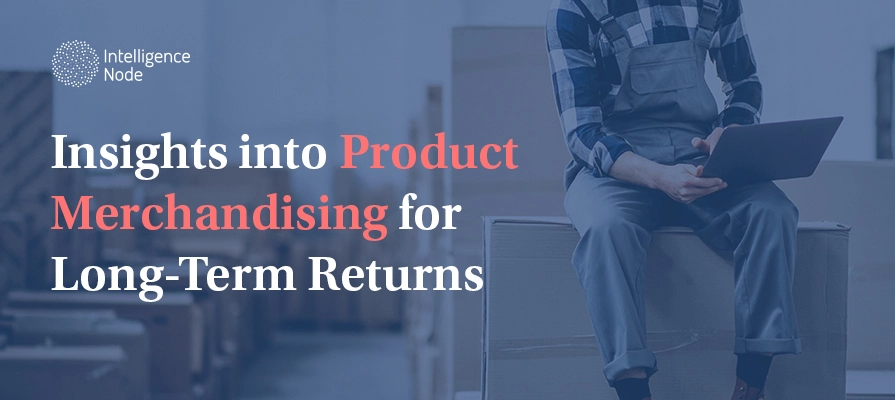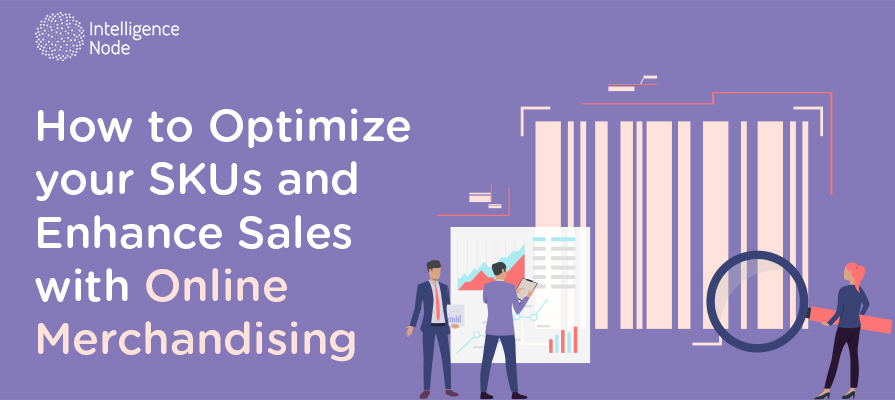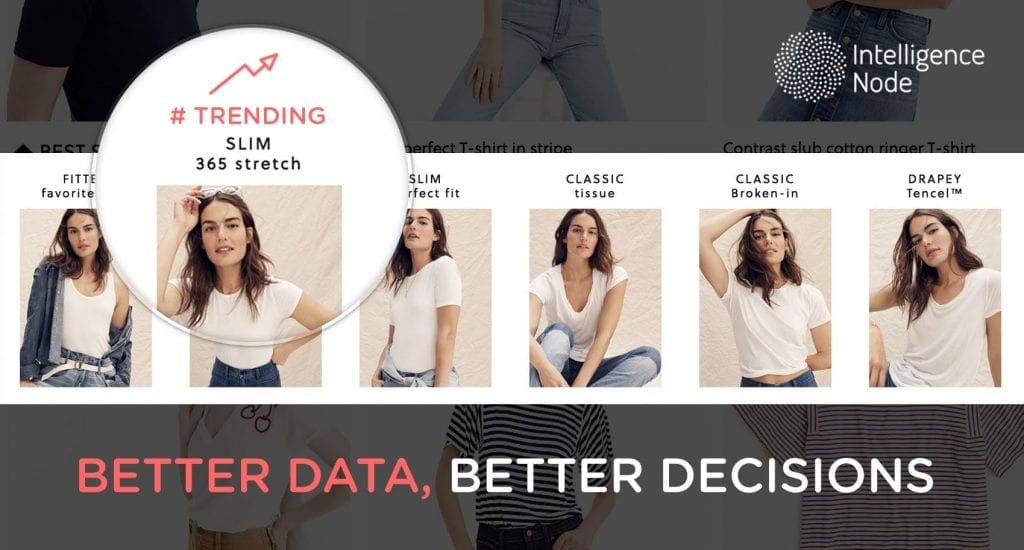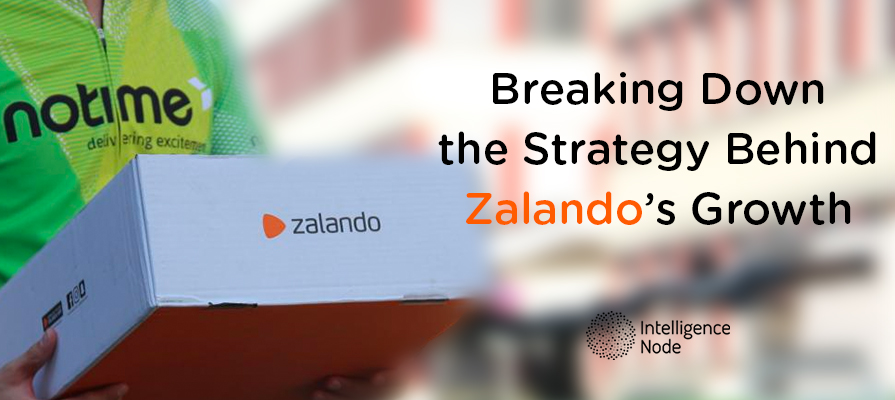What’s the best way to position your products to effectively entice consumers on your eCommerce store and maximize your returns? That’s a question that every company, on one level or another, comes face to face with. How you answer it, though, makes a world of difference: Do you rely on intuition, on long-held practices supported by status-quo thinking? Or do you utilize industry-leading analytic tools to build a multi-faceted assortment optimization strategy?
Here at Intelligence Node, we’re firm proponents of the latter. Establishing a strong merchandising strategy is as important for online stores as it is for your traditional brick-and-mortar stores. With data-driven, AI-enabled assortment optimization, companies can thoroughly consider all the vital factors of a product’s selling appeal: From inventory stocks and competitor analysis to product bundling and audience segmentation to customer preference and alternate product viability.
Understanding each of these elements enables a company to make smarter decisions with respect to organizing their SKUs. More specifically, adopting assortment analytics can lead to growth in per-product margins, improved customer relations, and better performance for each product category.
With that big picture in mind, let’s zoom in and explore what assortment optimization looks like from a practical perspective.
First thing’s first: Effective category management requires strategic inventory practices
Before you do anything else, use an assortment optimization software to understand the lay of the land. Take a look at what your competitors are offering: Are there any product categories that are overrepresented? If so, heavily pursuing that direction may be an uphill battle. But what about the other side of the coin: Are there any categories that are even somewhat underrepresented? If yes, this could be your golden opportunity for growth.
That being said, just because there is an opportunity doesn’t mean it’s the right opportunity for your brand. You also want to make sure that your categories reflect the desires of your existing customers and target audience.
Read more : Assortment Planning – The Holy Grail of Merchandising
Now, this begs the question of how to know what your customers want — a difficult question, given that they may not know themselves. The infallible answer, as always, comes to us in the form of data: Taking a look at past SKU sales patterns is the most effective way to achieve assortment optimization. We’ll dive deeper into this notion in the next section, but for now, suffice it to say that historic data and analytical evaluations of SKU trends can inform decisions about which parts of your inventory to prioritize, which to keep as they are, and which to remove or replace.
So: On the one hand we have market opportunity and on the other we have consumer interests. One of the keys to category management is finding the overlap between the two and shaping your inventory to match it.
With the aid of smart, intuitive technology, this becomes an ongoing iterative process, on autopilot. Your software assesses the efficacy of various categories’ performance — how profitable they are for you, how they’re performing for competitors — and you adjust your offerings according to smart recommendations.

Second: Assortment optimization also depends on customer-friendly product presentation
This is where we come back to the challenge of realizing what users want based on long-term SKU sales patterns. One particularly salient approach to this puts a prime focus on attributes, based on the notion that “customers don’t buy products; they buy a bundle of attributes.” Thus, knowing which SKUs belong to which categories is a matter of identifying and analyzing individual product characteristics like its brand and its features.
The benefit of dissecting SKUs into attributes is that you can approach assortment optimization with greater precision in a number of ways. For instance, attribute analysis may open the door to more effective recommendations as well as product pairings and groupings. Or it may help structure your presentation of merchandise to have just enough product diversity — i.e. eliminating product redundancies.
It can even dictate how many distinct options to offer for maximum sales potential; it’s very possible that expanding or shrinking your catalog may improve sales. Or, you may keep your offerings unchanged but rather use this data to set optimal prices for various SKUs.
Furthermore, having a grasp of product attributes allows for more accurate localization strategies. After all, different customer segments inevitably have different preferences, and you want to optimize the pricing and categorization of your products for each of them. A good assortment optimization software can help you group your audience into such valuable clusters so that you can better play into their distinct demands.
Regardless of which way you use this attribute mentality, it’s ultimately about harnessing a deeper understanding of your buyers. If you can assess their actions as they pertain to specific features and brands rather than to products, you can better position your category presentation to entice further purchases.
Third: Assortment analytics help distinguish consumer behavior shifts across the short and long-term
To reiterate, comprehending attributes guides assortment optimization based on past customer behavior. You find out what influenced various behaviors and try to replicate or avoid them.
But what about behaviors that have no such precedent? It would be shortsighted to imagine that the possibility of consumer behavior is limited to what has already taken place. That, of course, isn’t the case. And that’s why a big part of the assortment optimization game is prediction.
Prediction, in this context, requires the ability to make a particular distinguishment — that of short-term effects vs. long-term effects. In other words, is the market shifting because of a temporary, knee-jerk fluctuation? Or is the market shifting because of a well-established, deep-rooted change in behavior? You want to harness the latter — the assortment analytics that run deep and highlight something fundamental about your industry. This is how you confidently answer those questions with no precedent.
For example, one situation in which this might arise is when a product is underperforming. An assortment optimization software can be instrumental in uncovering the underlying reason for this and pivoting down a different path. After all, knowing a product isn’t delivering is essentially worthless if you can’t figure out a viable substitute for it.
And on the topic of substitutes, the next question is how customers react to them. Specifically: If customers can’t purchase their choice A, are you options B, C, or D compelling enough to grab their attention? Or will buyers abandon ship in droves?
To be fair, these aren’t questions you can often answer with 100% confidence. But with assortment analytics, you can get closer and closer to some level of certainty.
Assortment optimization: A continuous process that combines past, present, and future
We’ve touched on the importance of evaluating performance history — both yours and that of your competitors. And we’ve also covered the value of assessing present product performance, buyer behavior, and market opportunity.
To truly take the reins and be in control of these analytics, you need tools capable of assortment optimization machine learning. Because better data equals better decisions, and obtaining better data is a continuous, never ending process.
Armed with such powerful data, you put yourself in a position to seize the future of your industry. Because AI-powered, data-driven assortment optimization isn’t just about staying ahead of the curve; it’s about establishing the curve for others to follow.





